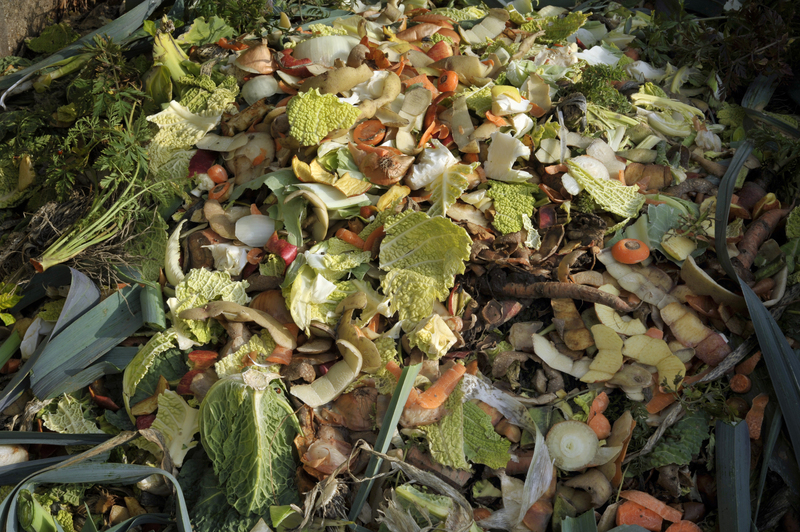Eco-Friendly Methods for Cutting Down Manufacturing Waste
The world of manufacturing has long been associated with heavy environmental impacts, but with the emergence of eco-friendly strategies, this narrative is changing. By adopting sustainable practices, businesses can not only reduce their carbon footprint but also cut down overall manufacturing waste. In this comprehensive guide, we explore effective, green methods to minimize waste and foster an eco-conscious production system.
Understanding Manufacturing Waste
Manufacturing waste encompasses various byproducts generated during production processes. These can range from solid waste such as scrap materials to hazardous emissions and wastewater. The environmental impact is substantial, and therefore, addressing it through sustainable methods is crucial.
Types of Manufacturing Waste
- Solid Waste: Includes surplus raw materials, packaging debris, and defective products.
- Liquid Waste: Often involves wastewater containing harmful substances.
- Gaseous Emissions: Release of CO2 and other pollutants resulting from manufacturing processes.
Recognizing the diverse forms of waste is the first step in implementing effective waste reduction strategies.

Eco-Friendly Methods for Waste Reduction
1. Implementing Lean Manufacturing Principles
Lean manufacturing focuses on minimizing waste while maximizing efficiency. This approach uses techniques such as:
- Just-In-Time Production: Aligns production schedules closely with demand to reduce inventory waste.
- Value Stream Mapping: Identifies waste sources in the production line and optimizes processes to eliminate them.
- Continuous Improvement (Kaizen): Encourages ongoing enhancements in reducing waste and optimizing resource use.
2. Adopting Renewable Energy Sources
The switch to renewable energy significantly reduces a facility's carbon footprint, subsequently lowering manufacturing waste. Consider options such as:
- Solar Energy: Powering facilities with solar panels to cut reliance on non-renewable sources.
- Wind Power: Harnessing wind energy to drive production equipment.
Utilizing renewable energy is not only sustainable but can also offer long-term cost savings.
3. Sustainable Material Sourcing
Choosing sustainable materials is a key eco-friendly strategy. Where possible, manufacturers should shift towards:
- Recycled Materials: Utilize post-consumer and post-industrial materials within production.
- Biodegradable Products: Use materials that naturally decompose, reducing environmental impact.
High-quality, sustainable alternatives can often replace conventional materials, leading to less waste and improved product lifecycle sustainability.
4. Efficient Waste Management Systems
An effective waste management system is central to reducing waste. Techniques and strategies include:
- Recycling: Establish rigorous recycling programs within the facility.
- Composting: Decompose organic waste to enrich soil, reducing landfill waste.
- Waste Auditing: Regular assessments to pinpoint waste sources and develop action plans.
Through robust waste management, companies can significantly decrease their waste output and environmental footprint.
Technological Innovations in Waste Reduction
1. Advanced Manufacturing Technologies
Technological advancements offer promising solutions for reducing waste:
- 3D Printing: Produces parts only as needed, cutting down excess material use.
- IoT and AI: Smart systems monitor and optimize energy and resource usage in real-time.
The adoption of advanced technology can fundamentally transform production processes, making them more efficient and sustainable.
2. Automation and Robotics
Automation can streamline manufacturing, reduce errors, and subsequently lower waste. Consider leveraging:
- Robotic Process Automation: Automates repetitive tasks, minimizing human error and waste.
- Automated Quality Control: Ensures products meet standards, reducing rejects and associated waste.
By integrating robots and automation, manufacturers can achieve higher precision and efficiency.

The Business Benefits of Eco-Friendly Manufacturing
Reducing waste is not just about environmental ethics; it also benefits businesses through:
- Cost Savings: Decreased material waste translates into reduced costs.
- Enhanced Brand Reputation: Consumers favor brands committed to sustainability.
- Regulatory Compliance: Meeting and exceeding environmental regulations mitigates legal risks.
Companies pioneering eco-friendly manufacturing often enjoy a competitive edge in today's market.
Conclusion
Eco-friendly methods for cutting down manufacturing waste are not merely an environmental necessity; they present vast opportunities for innovation, efficiency, and economic benefit. By integrating lean principles, renewable energy, sustainable materials, and advanced technologies, manufacturers can significantly reduce their ecological footprint. Embracing sustainability in manufacturing is pivotal not only for the health of the planet but also for the prosperity of the businesses involved.
Ultimately, the shift towards more sustainable manufacturing processes requires commitment and change, but the rewards are extensive: a better world and a brighter future.